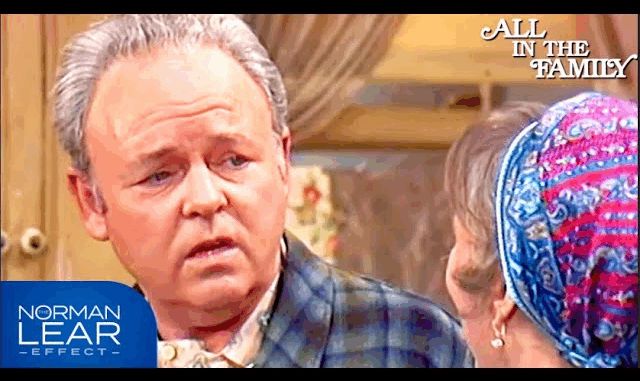
Long before diversity, realism, and political discourse became standard in television, All in the Family was leading the charge. Airing from 1971 to 1979, the series didn’t just entertain—it challenged and redefined what audiences expected from a sitcom. Decades later, its influence still shapes the way television addresses real-world issues.
A Bold Step Into Social Commentary
All in the Family was revolutionary because it dared to make audiences uncomfortable. Under the creative direction of Norman Lear, the series introduced complex, flawed characters who reflected the very real tensions of the 1970s. The show tackled racism, women’s rights, poverty, Vietnam, and sexuality—all within a 30-minute, laugh-track-supported format.
Archie Bunker, portrayed by Carroll O’Connor, became an unforgettable television icon: bigoted, loud, and resistant to change—but also vulnerable, human, and, at times, sympathetic. His arguments with his liberal son-in-law, Michael Stivic (Rob Reiner), reflected the generational and ideological rifts that were tearing America apart at the time.
Redefining the Sitcom Genre
Before All in the Family, sitcoms were often escapist, avoiding controversy in favor of idealized family life. Lear’s creation shattered that mold, ushering in what critics now call the “social sitcom.” It proved that humor and social commentary could coexist—and thrive.
Its success paved the way for a new wave of groundbreaking series like The Jeffersons, Maude, and later, Roseanne and The Fresh Prince of Bel-Air. Today’s critically acclaimed shows such as The Conners, Black-ish, and Abbott Elementary owe a clear debt to the trailblazing format Lear introduced.
Audience Reaction and Ratings Powerhouse
Despite (or because of) its controversy, All in the Family became a ratings juggernaut. It was the most-watched show on American television for five consecutive years (1971–1976)—a feat almost unimaginable today. It brought political debate into the living room and made middle America reckon with its own biases and beliefs.
The show’s ability to mix uncomfortable truths with laugh-out-loud moments made it a unifying cultural experience in a deeply divided era.
A Timeless Message
In today’s age of polarized politics, All in the Family feels eerily prescient. The conversations it sparked over 50 years ago still echo in contemporary debates. Whether it’s about race, gender, religion, or the generational divide, the themes remain as potent now as they were then.
Conclusion
All in the Family wasn’t just a television show—it was a national mirror. Its fearless storytelling, unforgettable characters, and cultural resonance mark it as one of the most important series ever produced. As modern audiences revisit or discover the series for the first time, its legacy continues to challenge and inspire new generations of viewers and creators alike.
